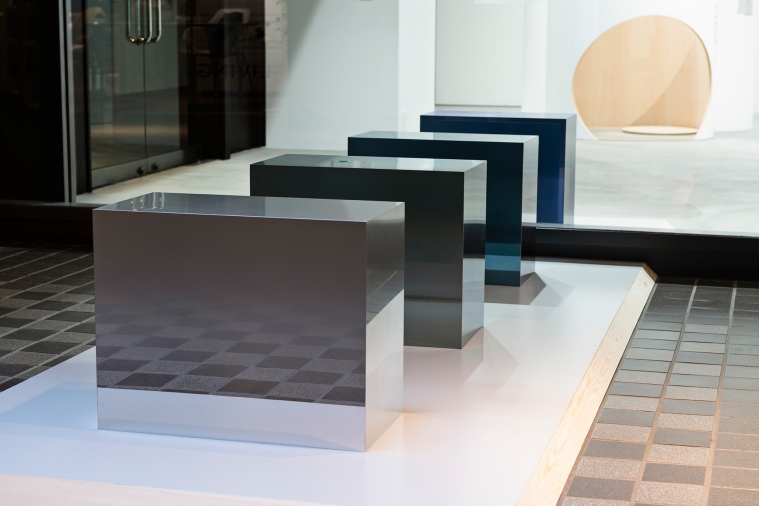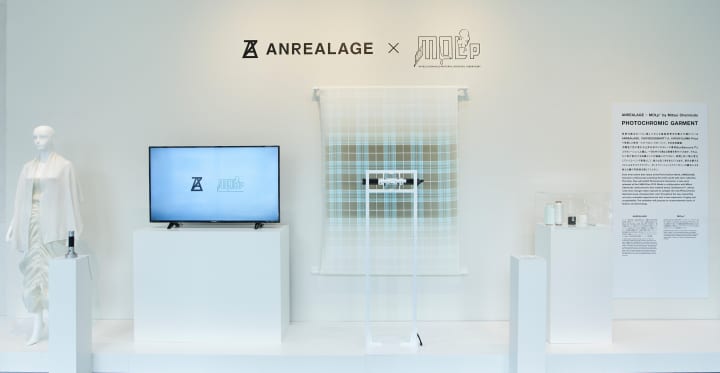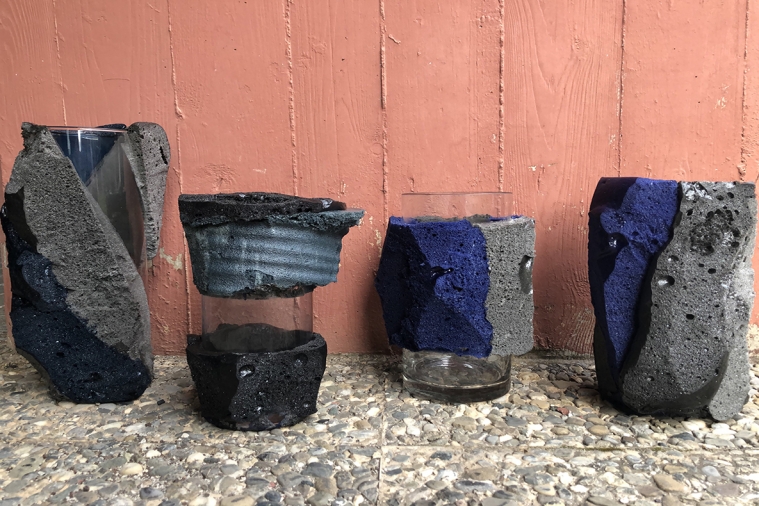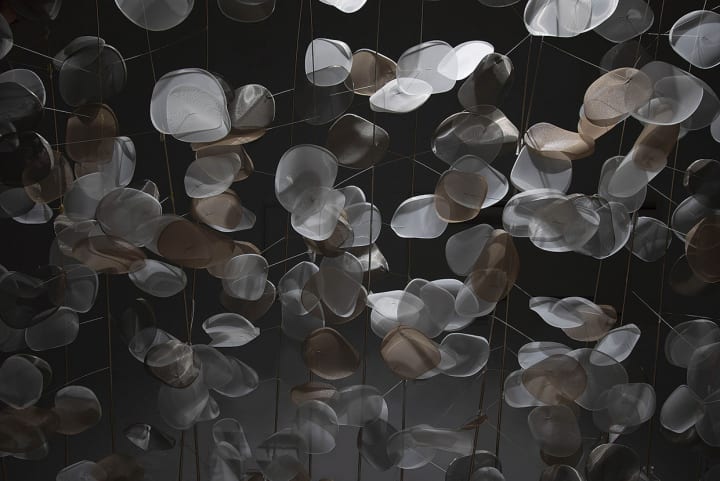The third edition of DESIGNART TOKYO ended a few weeks ago. During ten days, the centre of Tokyo turned into a big museum, showcasing the most recent global trends in art, design, and fashion. I had the chance to visit this interesting widespread museum and get inspired by experimental design, cutting edge materials, and promising your creators from Japan and abroad.
"DESIGNART is an endeavor to transmit and share the magnificence of objects and experiences created across all genres of design and art. It is a revolutionary attempt to bring together diverse objects and experiences created in crossover fields of art, design, interior design, fashion, and food from around the globe to be presented on the stages in various locations in Tokyo, one of the world's leading mixed culture cities. This is a 10-day event that transforms all of Tokyo into a museum of design and art, allowing everyone to stroll the city enjoying each display".
Bringing art and design into the daily life of people: this is the main ambition of DESIGNART. Moreover, this year was also the occasion to launch and promote the cultural program "1% for Art". In the U.S., Europe, South Korea, and Taiwan – where this legislation is already adopted - one percent of the budget for public architecture is dedicated to the creation of public art. If approved in Japan, this system would be able to stimulate the creative industry and generate occupations in arts and design.
The concept of "widespread museum" is becoming very popular in recent years, in contrast with the centralization of the contents that characterize the traditional museums. Spreading the materials throughout the city – rather than enclosing it in a single spectacular building - is a smart way to promote and valorize entire cities or territories. Thanks to DESIGNART, I had the chance to visit some areas and paths of Tokyo that previously I had ignored.
My tour throughout the attractions of this widespread museum started from Roppongi. "Imbalanced balance" is the name of my first stop along the route, as well as probably the most impressive artwork of the exhibition. Created by two young designers under 30 - Miyu Ikeda (1993-) and Takuto Kurashima (1992-) – this couple of lamps deeply impress for its elegant yet minimalistic concept and design. The extremely light lampshade is uplifted from the heat of the bulb, similarly to what happens in a hot air balloon. Once uplifted, the shade touches a switch that turns off the lamp and switches on the other light, creating movement. This system is affected by the external environment and the people in the room. For this reason, the action is always imbalanced and unpredictable, guided by invisible materials such as lights or temperature. This project - with its impressive simplicity and minimalism - embed many principles of Japanese aesthetics. Wabi-sabi (the beauty of things imperfect, impermanent, and incomplete), Shibui (simple, subtle, and unobtrusive beauty) and Yūgen (deep, mysterious) are some of those principles.
Still, in Roppongi, I visited "Stretch", organized by Material Connexion Tokyo. I have always been fascinated by this consulting company that collects and showcase in its showroom the most innovative and cutting-edge materials for architecture and design. In this specific exhibition, the concept was to invite companies and designers to work together to discover the new value of materials and technology. Sumitomo Forestry and Dentsu Design Firm collaborated to create "FORESTARIUM", a series of wooden pipes designed to offer the experience of being "wrapped in a tree" and experience it with touch, smell, hearing, and vision. Tsukisei Art Industry and Shizuka Kanno worked together to explore new potentials of stainless steel as a decorative element.
Moving toward Omotesando, I visited the Spiral Gallery, one Fumihiko Maki's masterpieces. Here I got really impressed by the "Photochromic Garment" realized by the fashion brand Anrealage in collaboration with MOLp by Mitsui Chemicals Group. This exciting experiment - announced at the "LVMH Prize" and showed for the first time in Japan – adopted for the first time the innovative SunSensor™ technology to a fashion collection. The clothes exhibited can change colors with sunlight, showing a different look during the day. Again, a genuinely Japanese approach linked with the concept of ephemeral and impermanence.
My friend Enza Migliore – Designer and Ph.D. from Italy – invited me to check her exhibition in Daikanyama. "Beyond molecular weight", hosted at Tenoha Daikanyama, showcased beautiful vases realized with polyurethane foam and glass. Enza Migliore's experimental works usually "born in a chemical laboratory through a hybrid approach of design, art, handcraft, and science". Polyurethane is a material often seen as a material lacking aesthetical values. By going "beyond molecular weight" of this material, the artwork turns it into an attractive and elegant substance that resembles natural stone while maintaining the characteristic lightness of the polyurethane.
After a few minutes of walking, I found the project "Aidanoma", created by Lixil Design at Daikanyama T-Site Garden Gallery. I have spent a long time there, intrigued by the three experimental projects exhibited there: "Fluctuation", "Kasari", and "Fukumi". I had the chance to talk with Yutaka Haga (Director of the Design Center) and the talented young designers Asuka Wada and Mitsuru Sugawara. They kindly explained the concepts behind the three proposals, namely to "explore the sound of the space that is possible now". These items investigate the meaning of boundaries in the Japanese tradition. Here, the transitional spaces have always been conceived as light and permeable to achieve a deep connection with nature and its elements: wind, light, shadow, and sound.
My fascinating experience of DESIGNART TOKYO ended with the exhibition curated by Okurayama Studio at Kashiyama Daikanyama - the new business facility designed by Oki Sato of Nendo – "a place where fashion, food, design, and art come together to stimulate your five senses". The visitors here were surrounded by the primitive force of nature, condensed in several Daté Kan stones quarried from Mount Okurayama. The company invited the designer Teruhiro Yanagihara and the artist and photographer Yuna Yagi to create unique artworks for this occasion. Okurayama Studio aims "to give people the chance to reaffirm their feelings of awe of nature and the beauty and power of natural shapes and coloring in the lifestyle of modern times".
My journey started with the lightness of a paper lamp and ended with the prominence of the natural stones of Mount Okurayama. I could experience the real essence of Japanese culture and philosophy: the emphasis for the natural elements, deeply respected by the Japanese since ancient times because of their deep connection with the divinity.

 English
English 日本語
日本語














